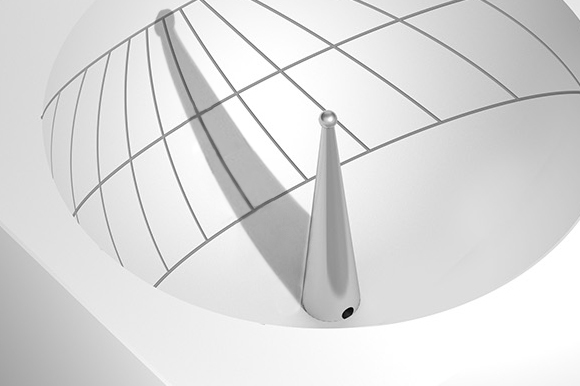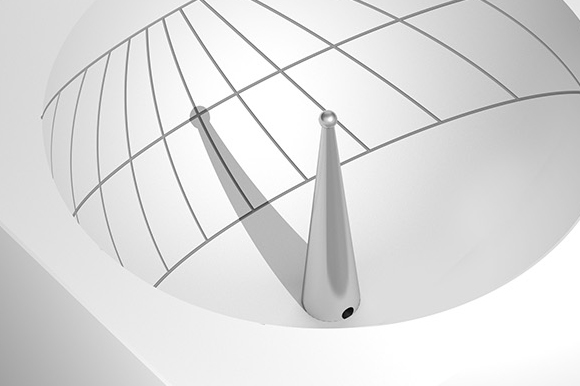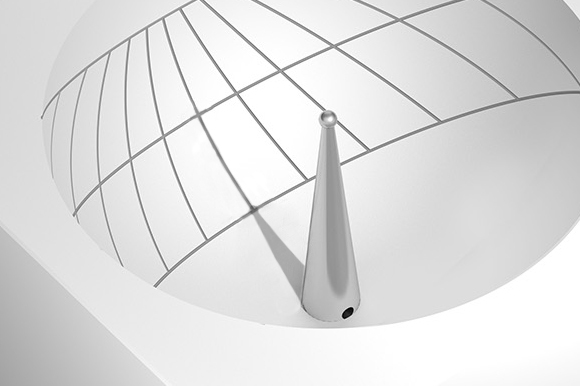Function of the scaphe - this is how the time is read on the scale
While the sun moves from east to west during the day, the gnomon's shadow moves from left to right - i.e. from west to east.
The shadow of the gnomon tip moves from hour line to hour line.
The temporal hour can be read from it.
At the winter solstice the shadow is longest and the shadow point of the gnomon's tip runs along the top horizontal line.
At the spring and fall equinoxes, its shadow is cast along the middle line, and at the summer solstice, when the shadow is shortest, the shadow point can be observed along the lowest line.
What are “temporal hours?”
From classical Greek antiquity until the beginning of the spread of mechanical clocks in modern times, the “daylight”, from sunrise to sunset, was divided into 12 hourly periods of equal length.
Temporal hour 1 is at sunrise. Hour 7 corresponds to the highest point of the sun, i.e. midday. Temporal hour 12 is at sunset.
The different durations of sunshine in the different seasons result in hours of different lengths. This meant that people's everyday working lives could be optimally adapted to the brightness of the day. This meant that “working hours” were longer in summer than in winter.
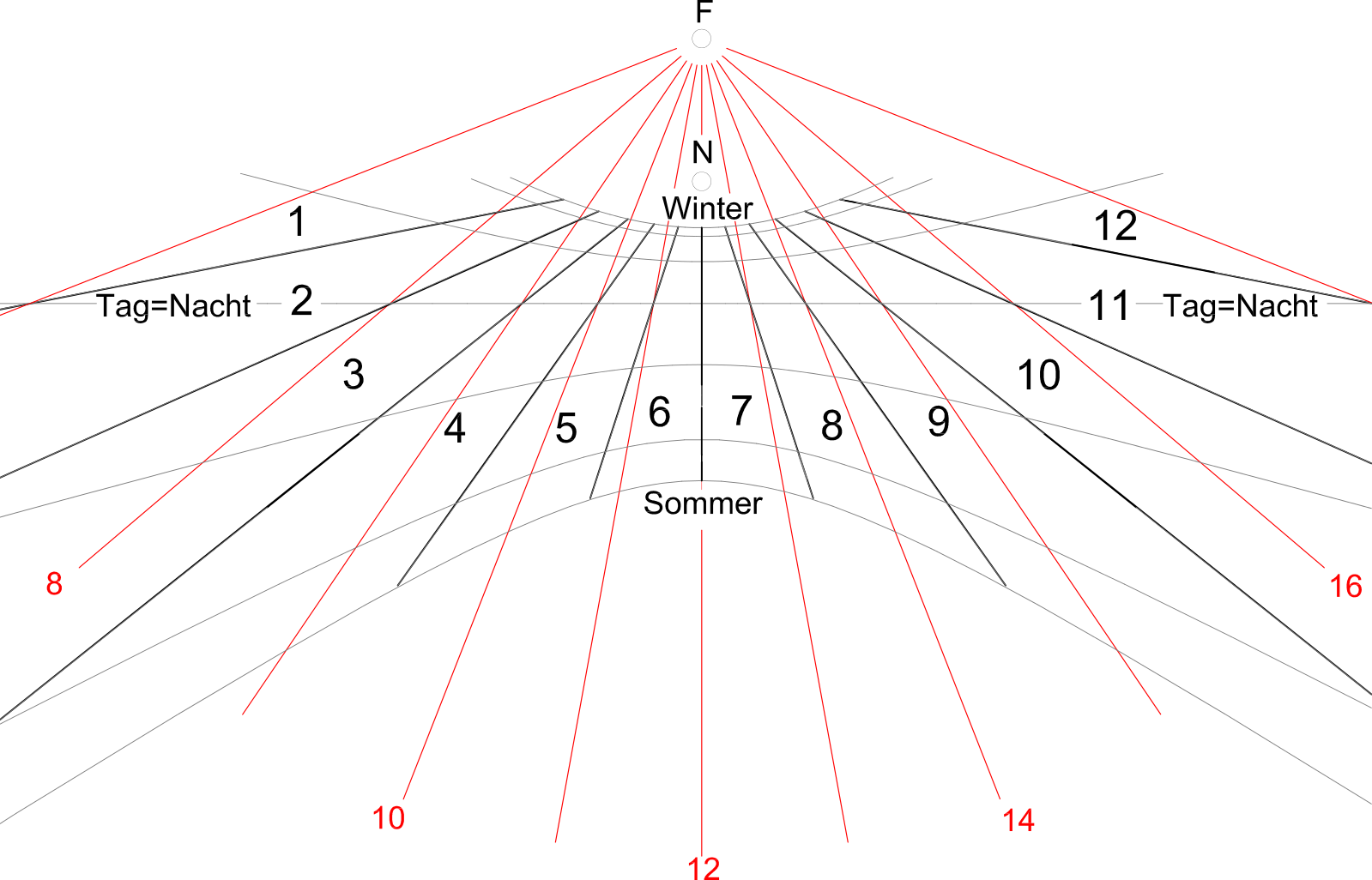
The temporal (black) and equinoctial (red) hours of the day are simultaneously displayed on this vertical dial.
Temporal hours compared to equinoctial hours using the example of sunshine duration in Frankfurt a. M.
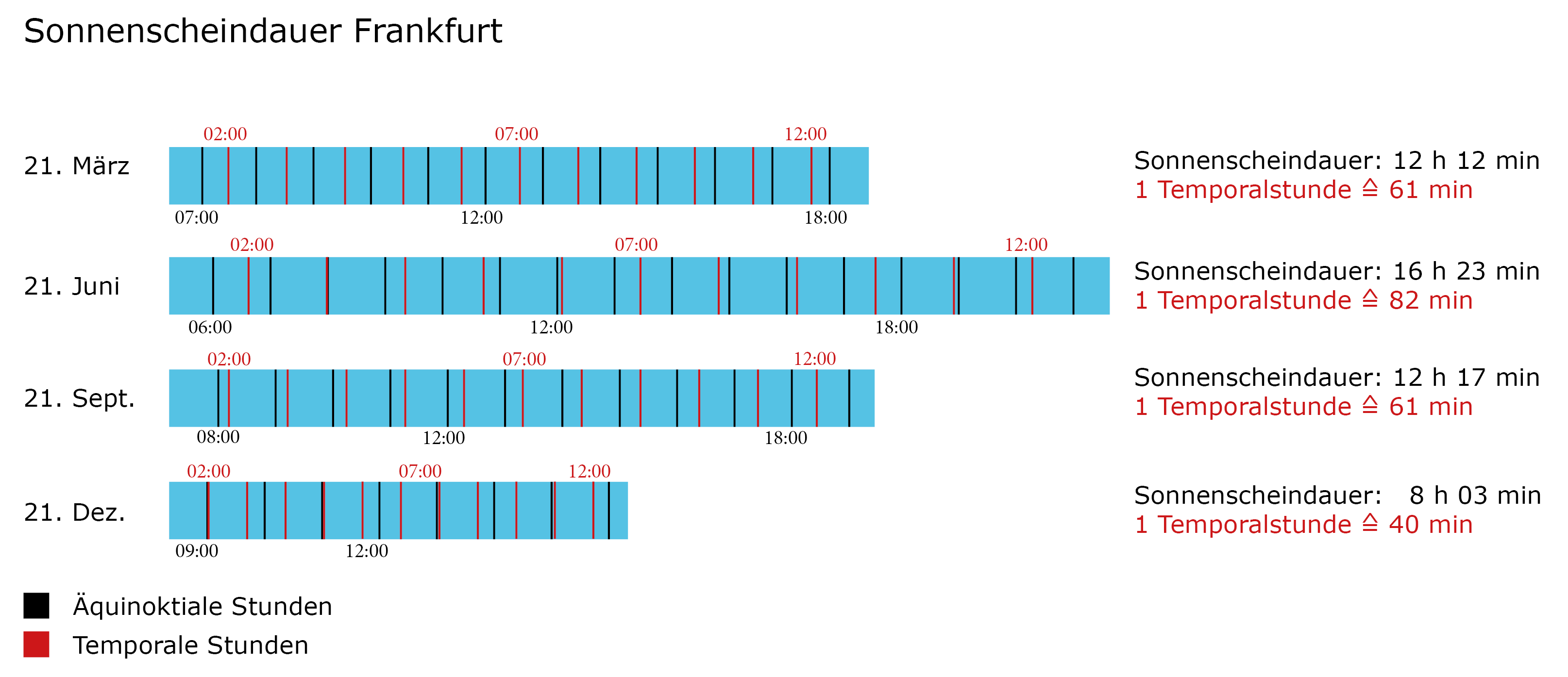
The temporal hour is twice as long in summer as in winter. In winter, the 12th hour begins even before 4 p.m. according to our current time measurement.
External links on sunrise, sunset and day length:
How long does the sunshine last for us?
The daily amount of sunshine depends on the Earth's orbit around the Sun. Because of the earth's tilt, the northern hemisphere is tilted towards the sun for half the year. That's why the sunshine duration is rather long in summer. But for half a year it is tilted away from the sun. For this reason, the duration of sunshine is rather short in winter.
The tilt of the earth's axis
The Earth's axis of rotation is called the Earth's axis and passes through the South and North Poles. At the same time, our Earth orbits the sun once in a year. The plane of the orbit is called the ecliptic. The Earth's axis is not at right angles to the ecliptic, but is inclined by approximately 23.4°. This inclination is also known as declination.
Since the tilt of the Earth's axis is always maintained, the angular distance δ changes from +23.4° on the day of the summer solstice to -23.4° on the day of the winter solstice. On June 21st the sun is vertically above the Tropic of Cancer and on June 21st/22nd. December vertically above the Tropic of Capricorn. So in the time in between it is vertical twice at all latitudes in between.
In addition, the sun does not rise above the horizon at the northernmost latitudes in winter and does not set there in summer (midnight sun).
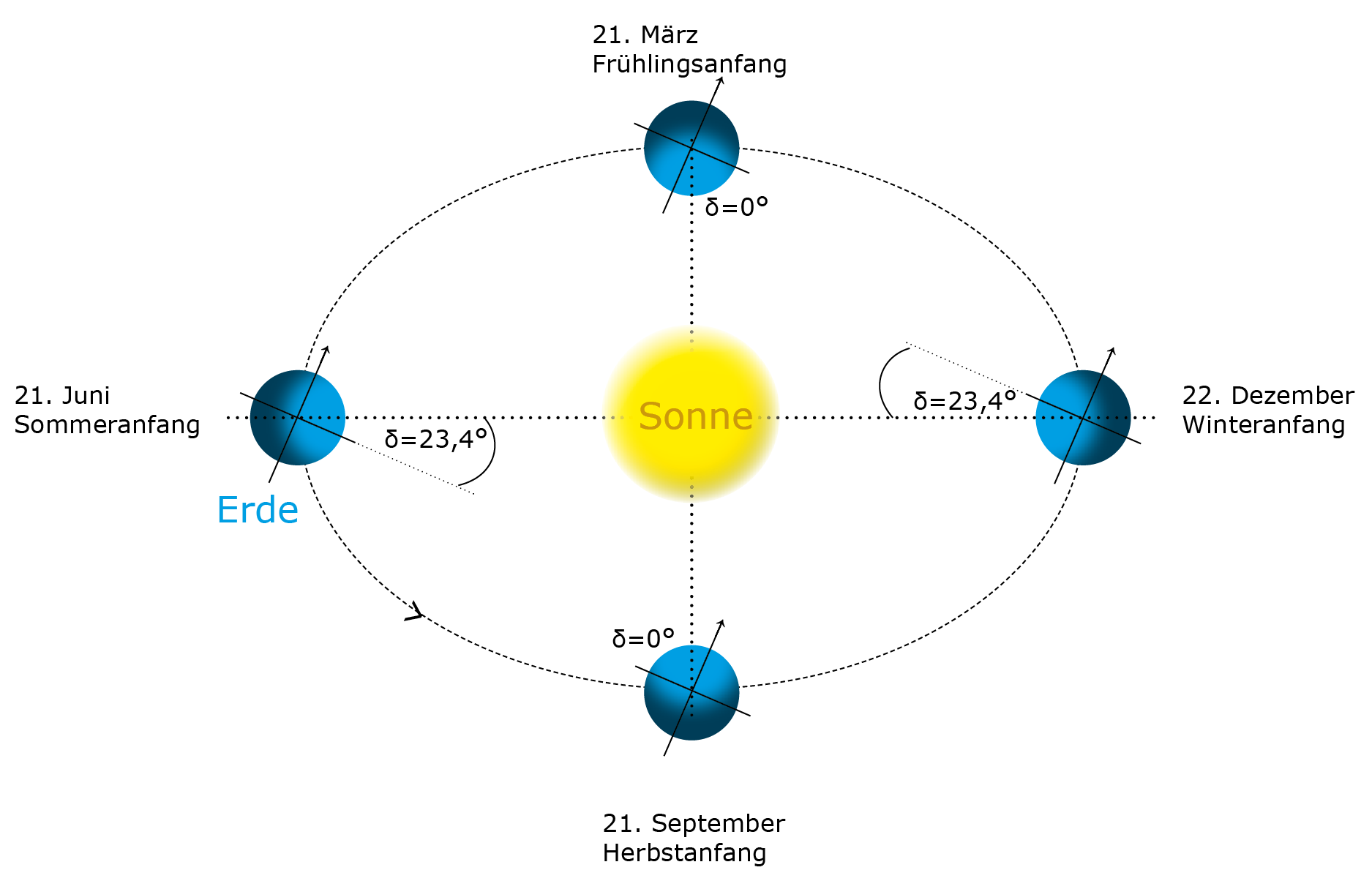
Since the length of the shadow depends on the latitude and the seasons, the scale of the scaphe is gradually adjusted to the location. For this reason, enter the latitude of your location in the contact form. Here you can determine your appropriate latitude (only digits before the decimal point).
Setting up and aligning the scaphe
Align the sundial with the scale towards north, preferably with the help of a compass. Now make sure that the scaphe is completely horizontal.

